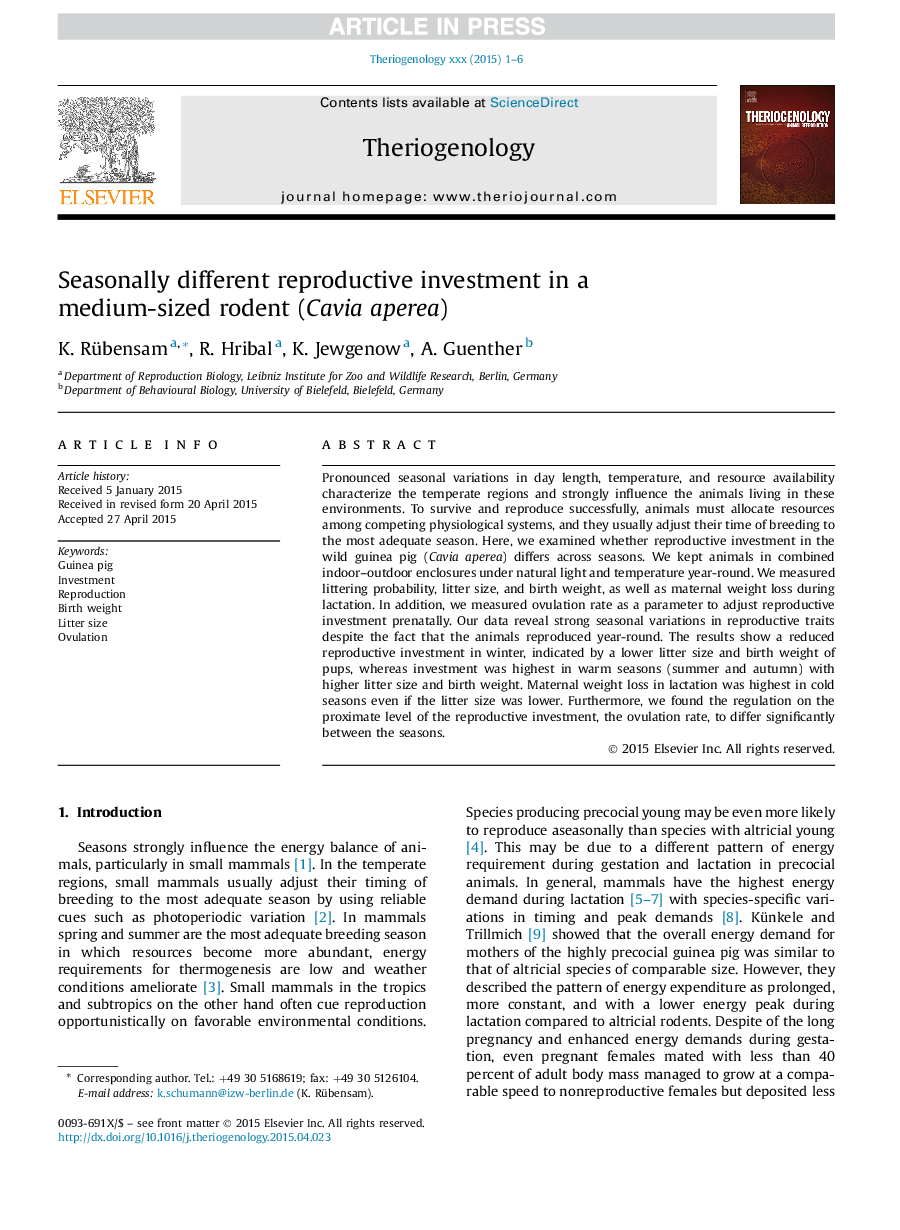| Article ID | Journal | Published Year | Pages | File Type |
|---|---|---|---|---|
| 10891852 | Theriogenology | 2015 | 6 Pages |
Abstract
Pronounced seasonal variations in day length, temperature, and resource availability characterize the temperate regions and strongly influence the animals living in these environments. To survive and reproduce successfully, animals must allocate resources among competing physiological systems, and they usually adjust their time of breeding to the most adequate season. Here, we examined whether reproductive investment in the wild guinea pig (Cavia aperea) differs across seasons. We kept animals in combined indoor-outdoor enclosures under natural light and temperature year-round. We measured littering probability, litter size, and birth weight, as well as maternal weight loss during lactation. In addition, we measured ovulation rate as a parameter to adjust reproductive investment prenatally. Our data reveal strong seasonal variations in reproductive traits despite the fact that the animals reproduced year-round. The results show a reduced reproductive investment in winter, indicated by a lower litter size and birth weight of pups, whereas investment was highest in warm seasons (summer and autumn) with higher litter size and birth weight. Maternal weight loss in lactation was highest in cold seasons even if the litter size was lower. Furthermore, we found the regulation on the proximate level of the reproductive investment, the ovulation rate, to differ significantly between the seasons.
Related Topics
Life Sciences
Agricultural and Biological Sciences
Animal Science and Zoology
Authors
K. Rübensam, R. Hribal, K. Jewgenow, A. Guenther,
